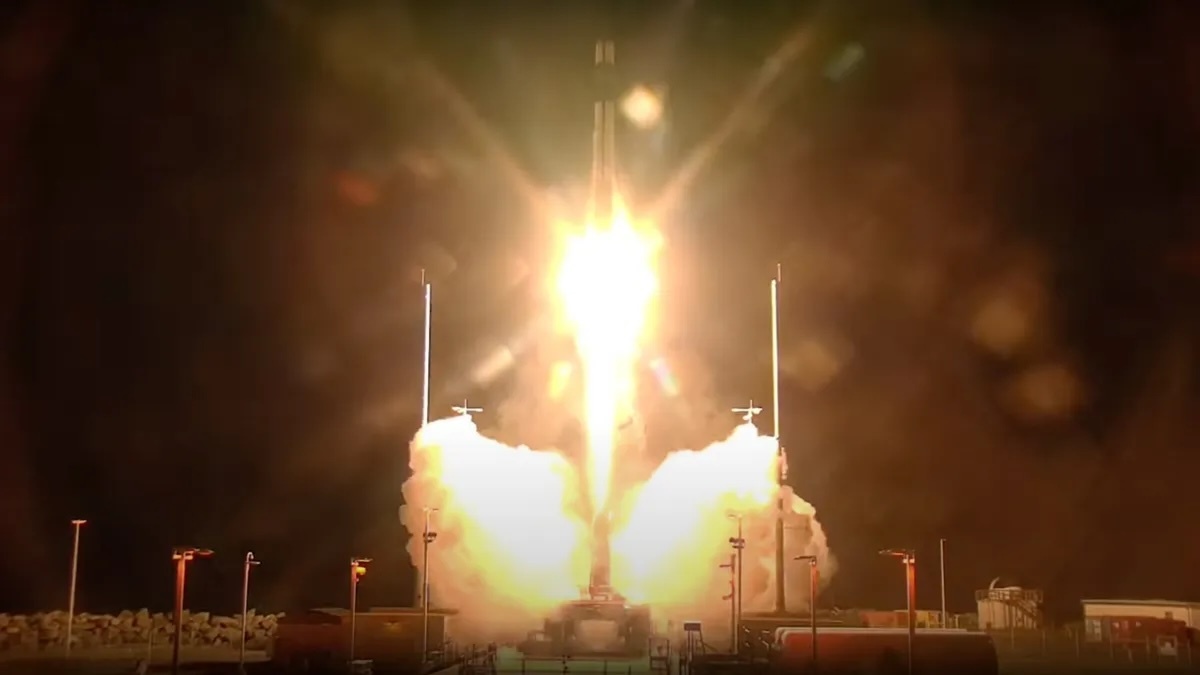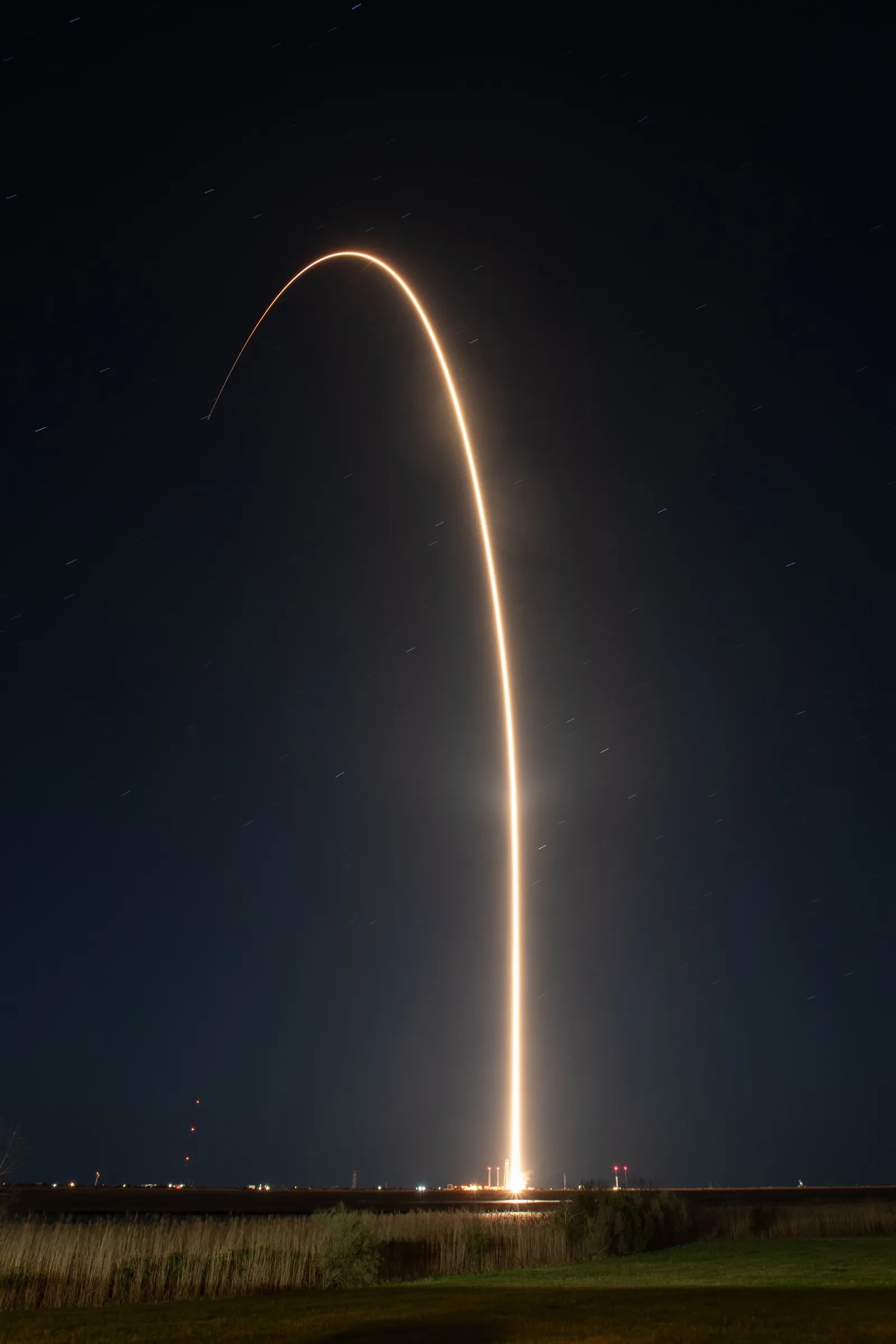21.03.2024
Rocket Lab launches mysterious spy satellites in 4th-ever US liftoff
The "Live and Let Fly" mission sent secret payloads aloft for the U.S. National Reconnaissance Office.
Rocket Lab launched from the U.S. for the fourth time ever on Thursday morning (March 21), sending mystery payloads aloft for the U.S. National Reconnaissance Office (NRO).
The NROL-123 mission — or "Live and Let Fly," as Rocket Lab called it — lifted off from the company's Launch Complex 2 (LC-2) at NASA's Wallops Flight Facility in Virginia on Thursday at 3:25 a.m. EDT (0725 GMT).
Like all 45 of Rocket Lab's previous orbital missions to date, NROL-123 employed Electron, a two-stage, 59-foot-tall (18 meters) rocket that gives small satellites dedicated rides to space. (The company is also developing a larger launch vehicle called Neutron, but it has yet to fly.)

A Rocket Lab Electron rocket launches the NROL-123 mission for the U.S. National Reconnaissance Office from Virginia on March 21, 2024. (Image credit: Rocket Lab)
NROL-123 sent three research missions skyward, Rocket Lab representatives said during the company's launch webcast on Thursday.
That's pretty much all we know about the payloads. The dearth of information is hardly surprising; the NRO builds and operates the United States' fleet of spy satellites and is generally tight-lipped about the nature and activities of those craft.
We do know, however, that the NRO awarded Rocket Lab the NROL-123 mission via a Rapid Acquisition of a Small Rocket (RASR) contract. "RASR enables the NRO to explore new opportunities for launching small satellites through a streamlined, commercial approach," Rocket Lab officials wrote in a mission description.
The NROL-123 payloads were deployed into orbit about an hour after liftoff as planned. Rocket Lab didn't show that milestone, however; the company ended its launch webcast just under 11 minutes after launch, presumably at the request of the NRO.
NROL-123 was the fifth mission that Rocket Lab has launched for the NRO. The other four lifted off from the company's Launch Complex 1 (LC-1) on New Zealand's North Island.
LC-1 has hosted the vast majority of Rocket Lab's orbital launches to date — 42 of 46 now, to be precise. The other four have lifted off from LC-2, which hosted its first Electron launch in January 2023.
Rocket Lab is working to make the Electron's first stage reusable; the company has recovered boosters from the sea on a number of previous missions and has even successfully reflown a used engine. But NROL-123 apparently didn't feature any recovery activities; the press kit and the launch webcast made no mention of them.
Quelle: SC
----
Update: 23.03.2024
.
NRO Mission Launches from NASA Wallops on Electron Rocket
NASA’s Wallops Flight Facility supported the successful launch of a Rocket Lab Electron rocket at 3:25 a.m. EDT, Thursday, March 21, from Virginia’s Mid-Atlantic Regional Spaceport on Wallops Island, Virginia.
The rocket carried three collaborative research missions for the National Reconnaissance Office (NRO). The mission, dubbed NROL-123, was the first NRO mission to fly on a Rocket Lab rocket launched from the United States.

“We are proud to support our commercial and government launch partners with world-class launch range, safety and support services,” said David L. Pierce, Wallops Flight Facility director. “It was a picture perfect launch.”
This was the third Electron launch from Wallops and the fourth launch from Rocket Lab’s Launch Complex-2 in Virginia.
The next launch from Wallops is scheduled April 8, 2024, during the solar eclipse. The Atmospheric Perturbations around Eclipse Path (APEP) mission will launch three sounding rockets before, during, and after peak eclipse time to study how the sudden drop in sunlight affects the Earth’s upper atmosphere.
NASA’s Wallops Flight Facility provides agile, low-cost flight and launch range services to meet government and commercial sector needs for accessing flight regimes worldwide from the Earth’s surface to the Moon and beyond. Wallops’ flight assets – ranging from research aircraft, unmanned aerial systems, and high-altitude balloons to suborbital and orbital rockets – provide a dynamic range of flight capabilities. In addition, operational launch range and airfield assets at the facility enable science, aerospace, defense, and industry sectors.
Quelle: NASA
